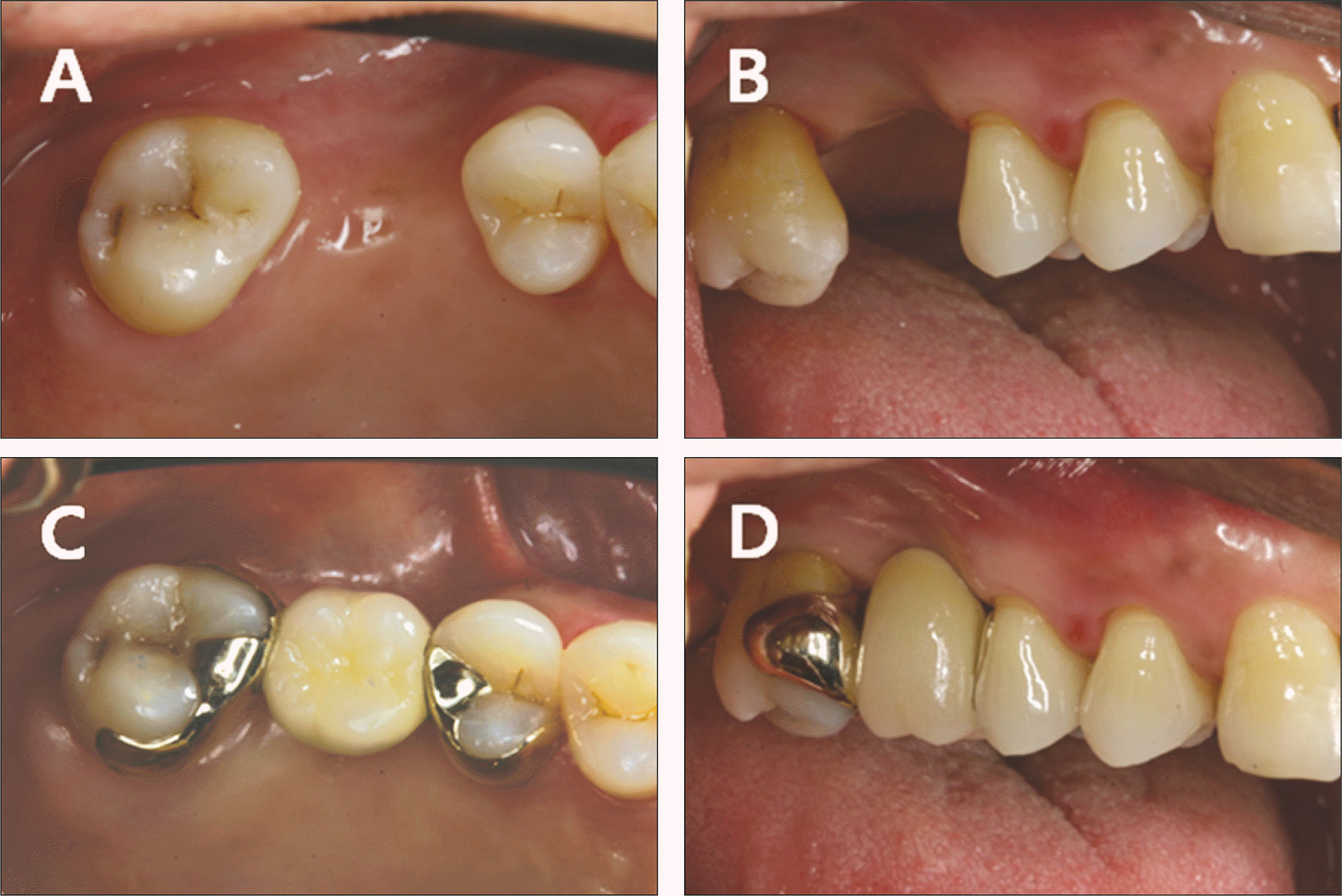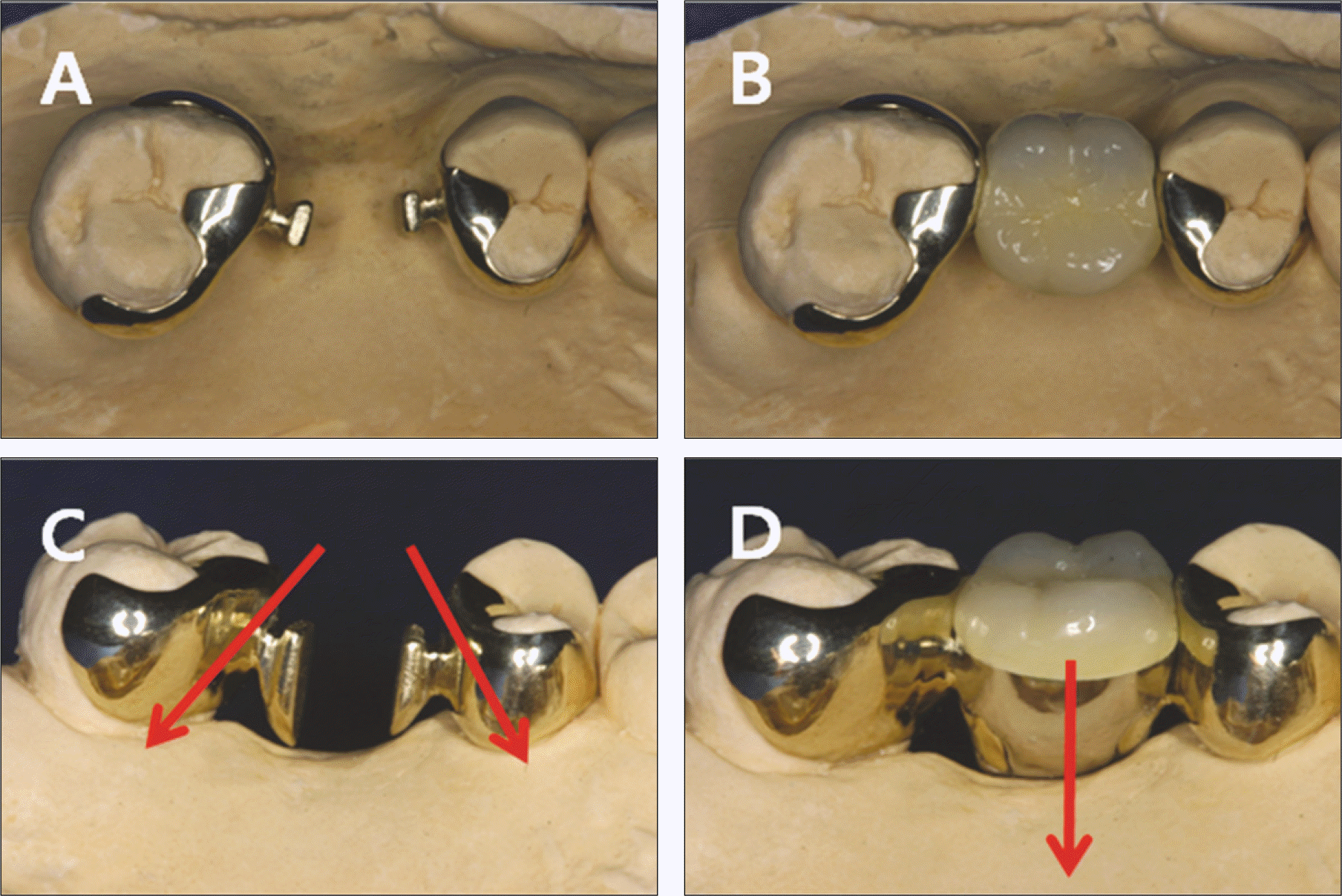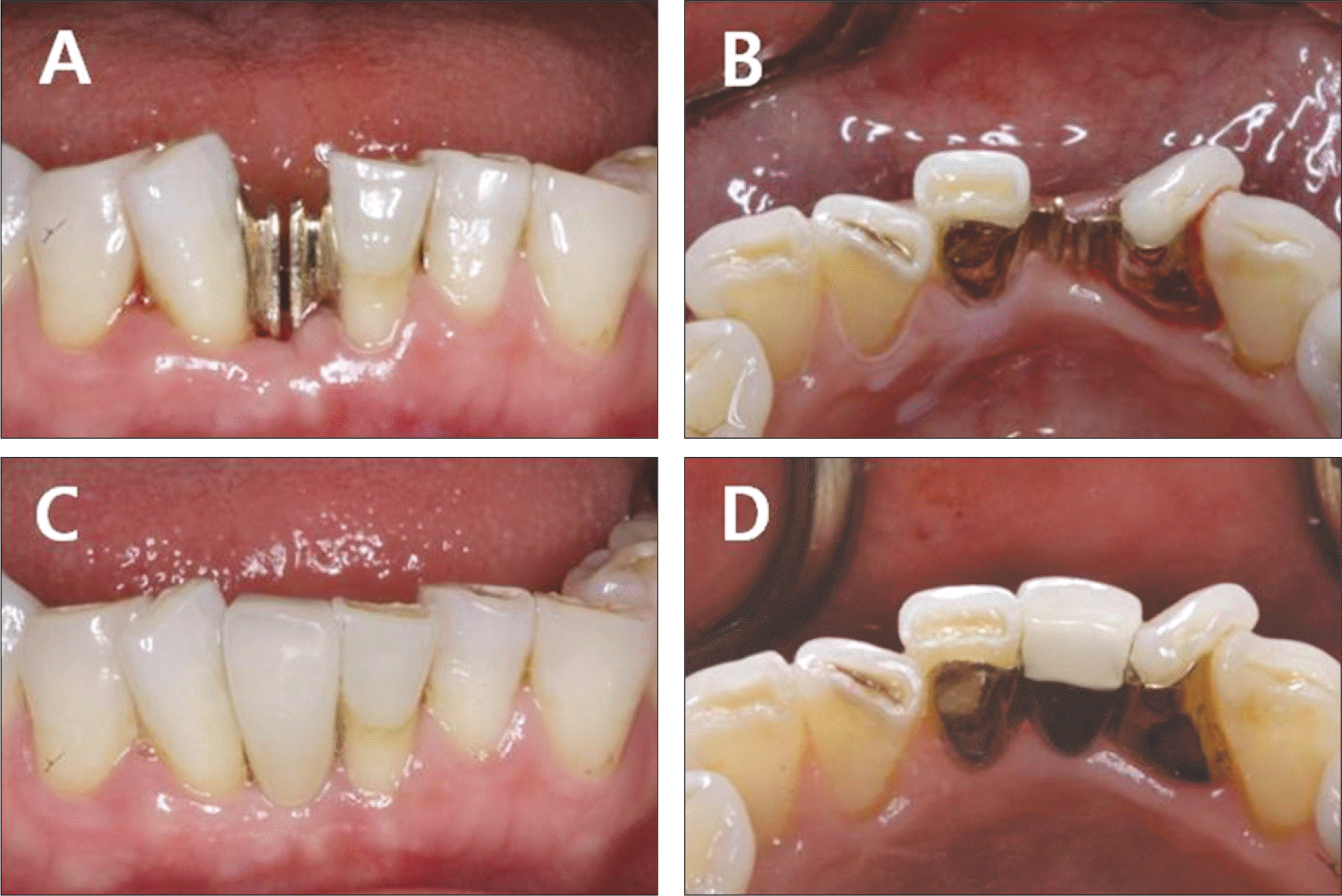Abstract
Purpose
The object of this clinical study was to evaluate the short-term outcome of modified resin-bonded fixed partial dentures which utilizes the original tooth undercuts and different path of insertion of components.
Materials and methods
71 units of modified RBFPDs that were used in 21 patients at the Department of Prosthodontics, College of Dentistry, Yonsei University were evaluated. The follow-up period was up to 25 months, the mean being 7 months. Survival rate, mobility, percussion, probing depth, bleeding on probing, plaque index was recorded and radiographs were taken to monitor alveolar bone loss.
Results & Conclusion
Within the limits of this short term retrospective study, it was concluded that: 1. No mechanical failure such as debonding or fracture of the framework was found during the follow-up period. 2. The periodontal apparatus was stable and no clinical change was observed after prosthetic treatment. 3. No significant marginal bone loss was found in the radiographic evaluation. (J Korean Acad Prosthodont 2011;49:106-13)
Go to : 
REFERENCES
1.Rochette AL. Attachment of a splint to enamel of lower anterior teeth. J Prosthet Dent. 1973. 30:418–23.

2.Howe DF., Denehy GE. Anterior fixed partial dentures utilizing the acid-etch technique and a cast metal framework. J Prosthet Dent. 1977. 37:28–31.

3.Livaditis GJ. A chemical etching system for creating micromechanical retention in resin-bonded retainers. J Prosthet Dent. 1986. 56:181–8.
4.Priest G. An 11-year reevaluation of resin-bonded fixed partial dentures. Int J Periodontics Restorative Dent. 1995. 15:238–47.
5.Botelho M. Resin-bonded prostheses: the current state of development. Quintessence Int. 1999. 30:525–34.
6.Arcoria CJ., Dewald JP., Vitasek BA., Wagner MJ. Effect of undercut placement on crown retention after thermocycling. J Oral Rehabil. 1990. 17:395–402.

7.el-Mowafy O., Rubo MH. Retention of a posterior resin-bonded fixed partial denture with a modified design: an in vitro study. Int J Prosthodont. 2000. 13:425–31.
8.Chow TW., Chung RW., Chu FC., Newsome PR. Tooth preparations designed for posterior resin-bonded fixed partial dentures: a clinical report. J Prosthet Dent. 2002. 88:561–4.

9.Yi JW., Cho IH., Lee JH., Kim SK. A comparative study of the resistance to dislodgement of fixed prostheses using bio-pin. J Korean Acad Prosthodont. 2005. 43:176–90.
10.Doh RM., Lee KW. Dislodgement resistance of modified resin-bonded fixed partial dentures utilizing tooth undercuts: an in vitro study. J Adv Prosthodont. 2009. 1:85–90.
Go to : 
 | Fig. 2.Schematic representation of modified resin-bonded fixed partial dentures. Two retention parts (①) and middle pontic part (②). Arrows indicate the paths of insertion for each part (From Doh RM et al. J Adv Prosthodont 2009;1:85-90). |
 | Fig. 3.Preoperative intraoral photo of 1st molar missing area (A, B). Abutments are showed different long axis. Postoperative intraoral photo: Occlusal and buccal view after prosthesis setting (C, D). |
 | Fig. 4.Occlusal and palatal view of fabricated resin-bonded 3 unit fixed partial denture of Fig. 3. Figure shows two retention parts (A, C) and after complete sitting of middle pontic part (B, D). Arrows indicate the paths of insertion for each part. Note that embrasure spaces for easy cleansing. |
 | Fig. 5.Preoperative intraoral photo (A) and lingual view of model fabrication (B) of lower anterior area. |
 | Fig. 6.Facial and lingual view of modified resin-bonded 3unit fixed partial denture on lower anterior area. Two retentive parts are cemented first with resin cement (Panavia F; Kurary Medical Inc., Okayama, Japan) (A, B). After setting of retentive parts, middle pontic part is cemented (C, D) along with different path of insertion from retention parts. |
 | Fig. 7.Example of radiographic evaluation during follow-up period. A: before extraction of #41, B: After prosthetic treatment, C: 6-months follow-up, D: 2-years follow-up. |
Table 1.
Clinical assessment of patients




 PDF
PDF ePub
ePub Citation
Citation Print
Print



 XML Download
XML Download